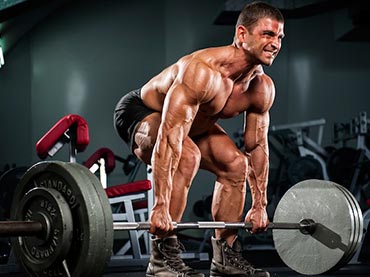Having trouble in taking your workout to another level? Try adding deadlifts to your strength routine.
Journal of Strength and Conditioning Research recently published a study that concluded that people who did deadlift exercise twice weekly for ten weeks experienced an improved in torque capacities in both knee extensors and flexors. This means that people who did deadlifts increased their vertical jump height which in turn result in getting faster and had more power when doing explosive movements.
Matt Stock, the author of the study and an assistant professor at Texas Tech University in Lubbock, explained that a person will improve his other dynamic movements such as sprinting and box jumps by doing deadlifts.



According to Faheem Mujahid, owner and master trainer at Influence Atelier in Miama, performing a deadlift has a huge allover benefits. The exercise targets the glutes and the hamstrings while involving the quadriceps. The exercise is one of the few methods that works to help provide leg stability.


[dfp1]

Here’s how to do deadlift in the proper way:




[dfp2]
Deadlift exercises are very effective but they can wreak your lower back if done incorrectly. According to experts, the key to getting the exercise right: Work to engage the transverse abdominis muscles or the abs.
Not involving the abs will put all the pressure to the spine. When the tranverse abs are engage properly, it will automatically engage the muscle in the lower spine (thoracic lumbar fascia) at the same time. This will offer protection to the spine, according to Mujahid.
To know that you got a handle on your core (abs and lower spine muscles), Mujahid suggested a trick that he and his clients used: Tie a piece of yarn or a pair of shoelaces in a knot around the waist. When the core isn’t engage, you will feel the pressure from the string. The feeling of the string contraction against the core will remind you to pull in the belly button when performing deadlift.


